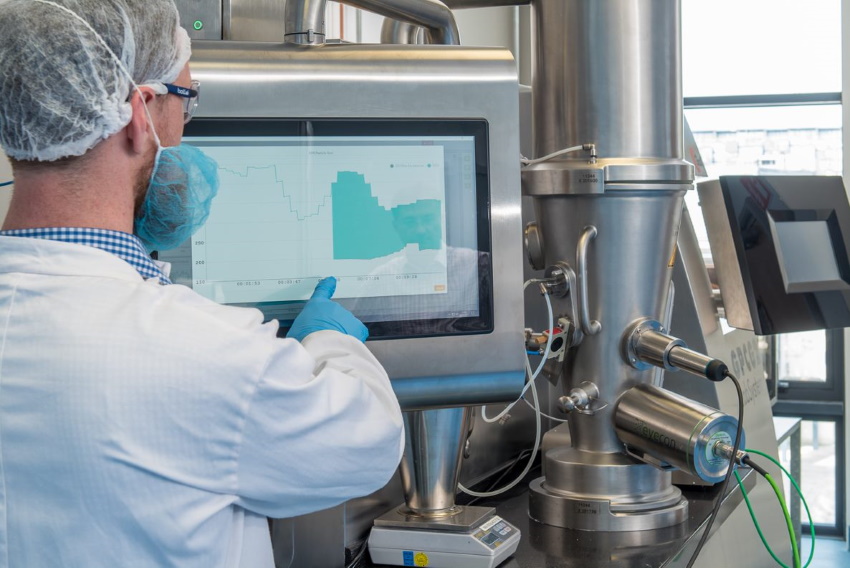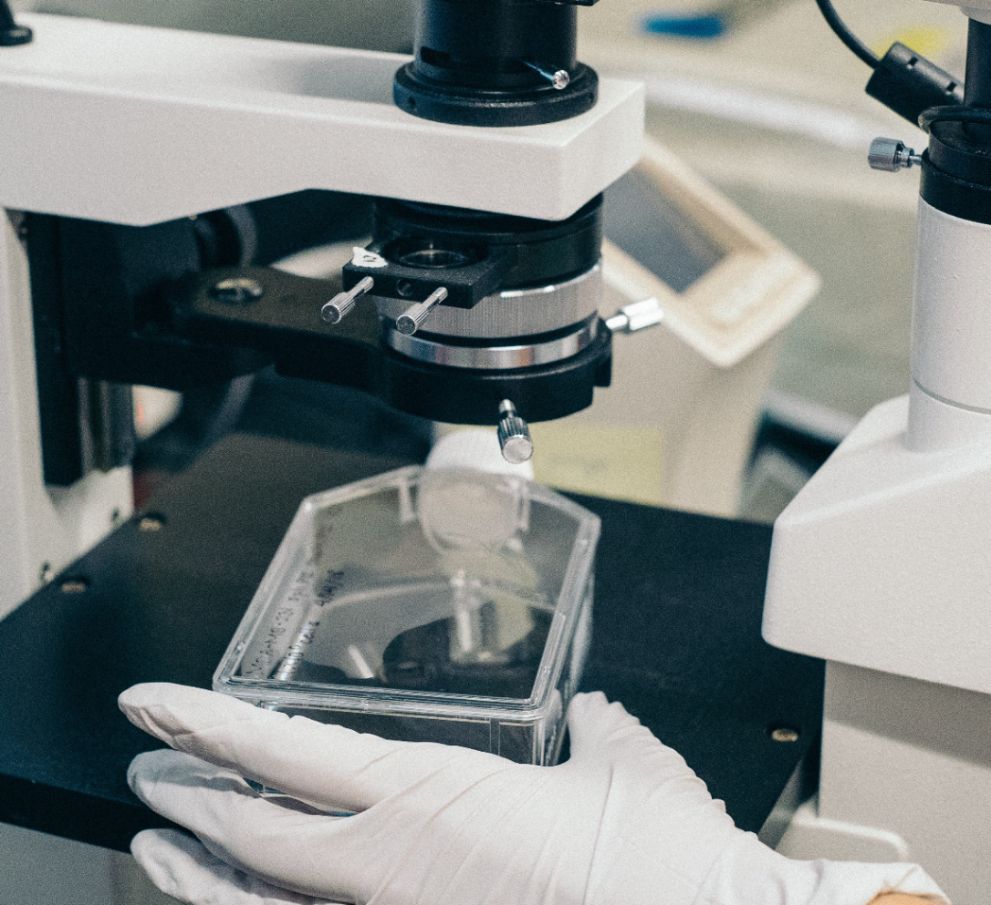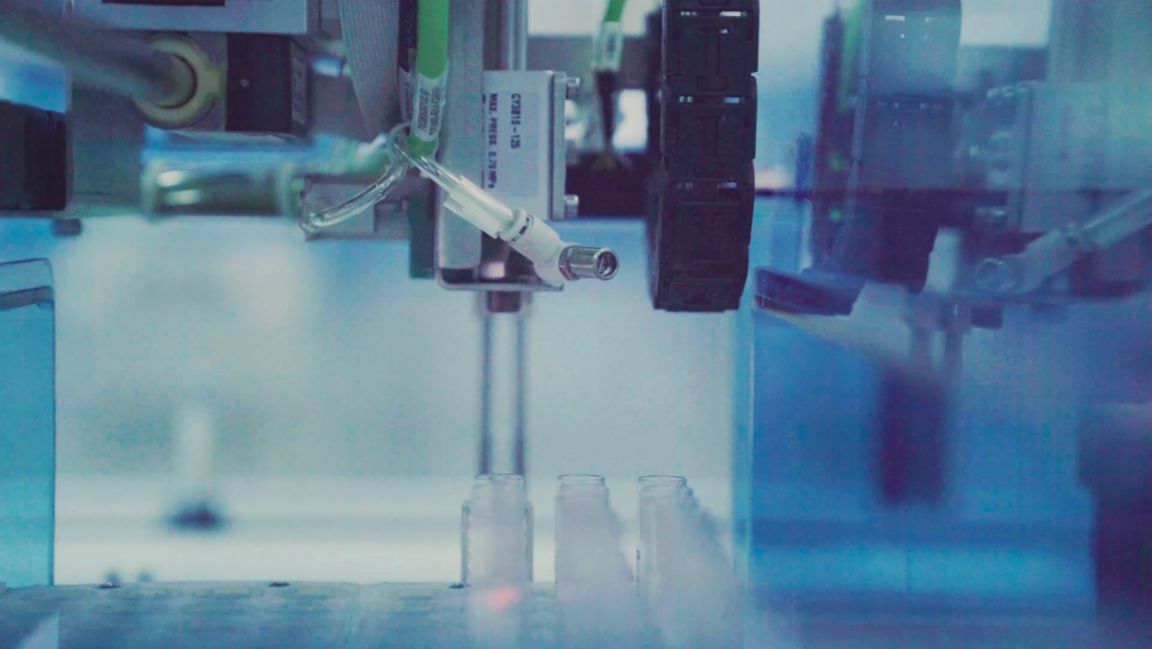Innopharma Technology is a frontrunner for developing technologies for the pharmaceutical, food science, and MedTech industries to make their manufacturing processes more efficient.
Whether it’s to aid in simplifying real-time process data or to streamline and accelerate process development, Innopharma Technology has the process analytical technology tools to assist.
But what is process analytical technology? And how does it work to make manufacturers’ daily tasks easier?
We’re covering all of that and more in this complete guide for manufacturers:
What Is Process Analytical Technology (PAT)?
Process Analytical Technology (PAT) typically refers to manufacturing methods for certain industries, such as the MedTech and pharmaceutical industries.
Parameters, such as key performance indicators and quality and safety standards are put into place during the process development. These parameters are known as Critical Quality Attributes (CQAs). After those parameters are put into place for a manufacturing process, PAT steps in to make sure the process meets the quality and efficiency requirements.
That’s the ultimate goal of process analytical technology – to ensure a final product that is up to quality and safety standards, and to simplify the work of process analytical technicians.
How Do Process Analytical Technologies Work?
Process analytical technologies work within a PAT-based process. That means that they’re implemented into an overall production process, such as a pharmaceutical manufacturing process, rather than used every so often to “double check” quality assurance.
That’s because Quality by Design (QBD) and PAT go hand-in-hand. QbD refers to products that aren’t quality-tested after the finished product. Instead, PAT technologies work to ensure quality is inherent to the overall process, by the process’s design.
PAT technologies cover a variety of tools to measure and analyse chemical, physical, mathematical, microbiological, and even risk-based approaches to product design. Many of the tools offer data in real time or as close to real time as possible.
What Are Different Types of PAT Tools?
The term process analytical technology covers a wide variety of different tools throughout the entire manufacturing process. Tools might look like spectroscopic and chromatographic compositional analysers, which helps technicians understand the chemical makeup of a product.
They could also be reaction sampling devices to extract and prep different sample types for technicians to analyse.
The most common different types of PAT tools include:
Innopharma Technology’s PAT Tools:
Innopharma Technology also offers multiple types of PAT tools, particularly with Industry 5.0’s solutions:
SmartX Process Automation Platform: Technicians get a faster, clearer view of critical problems that are affecting the overall manufacturing process. Ultimately, technicians can use it to streamline their process and make it more efficient.

How Can Process Analytical Technologies Improve Quality and Reduce Costs?
There are plenty of benefits of implementing PAT, which is why pharmaceutical and MedTech companies adopt process analytical technologies in their workplace. Two of the most important are to improve the quality of the end product and to reduce costs throughout the process.
How Does PAT Improve Quality?
Tools like particle size analysers, which provide in-depth data for technicians to analyse, can often reduce human error. While technicians are needed to complete the analysis, the data offered by the PAT tool is often much more consistent when programmed with the right product quality parameters and key performance indicators.
In the end, the final product is more consistent and up to quality and safety standards.
How Does PAT Reduce Costs?
By reducing human-error and improving the quality of end products, process analytical technology tools inherently reduce manufacturing costs. Rather than technicians having to restart the manufacturing process again, which is costly in raw materials and time spent, the reduction in human-error causes a reduction in costs.
What Manufacturing Industries Use PAT?
Many industries that manufacture chemical or microbiological products have moved forward with PAT implementation. One has truly embraced the benefits of implementing PAT, and is seen as a leader in the adoption of it: the pharmaceutical industry.

Process Analytical Technology in the Pharmaceutical Industry
Going on close to multiple decades, process analytical technology has been prominent in the pharmaceutical industry. Arguably, it was one of the industries where PAT had been needed most.
Because of the nature of the pharmaceutical industry, which involves working with precise measurements of chemicals and microbiological products, quality assurance is critical.
Not only do technicians need to meet quality assurance standards, but PAT also assists in speeding up the process. That involves getting more of the medications on the market for consumers who need them.
What Are the Advantages and Disadvantages of Process Analytical Technology?
Like everything else in life, there is a balance between the advantages and disadvantages of process analytical technology. When considering PAT implementation, it’s important to weigh the pros and cons to make the most beneficial decision.

The Advantages of Process Analytical Technology:
The great news is that, for the most part, there are plenty of benefits of implementing PAT compared to drawbacks. The top benefits include:
Better Knowledge of Raw Materials
Many PAT tools offer technicians more data into the makeup of products. For example, a compositional analyser can show technicians the percentage makeup of the different chemicals.
It’s another element of how QbD and PAT work together to create a higher quality product in the design, versus quality control and assurance once it’s completed.
Higher Quality End Products
Speaking of higher quality products, process analytical technology assists in achieving exactly that. Key performance indicators and quality parameters can be set through the tools. Then, the tools automatically work to ensure they meet the critical quality attributes already set.
Improved Efficiency in Manufacturing Processes
Both of the above advantages of process analytical technology lead to an improved efficiency among technicians throughout the entire production process.
With the help of technologies, the overall process is more streamlined than if technicians had to do each part individually.
One of the greatest process analytical technology examples lies in this advantage. Because PAT uses a quality by design approach, the systems can detect variations or imbalances when set against the CQAs. The system can then adjust to meet the parameters right away. This keeps technicians from having to toss away an imbalanced batch and start over.
For example, in this study, we used PAT for In-Line Monitoring of a Milling Process During DoE for Continuous Processing. Using our Eyecon2 to monitor particles in-line in real-time on the milling process played a key role in the DoE and process understanding. This instant access to data facilitated rapid decision making during both product development and manufacture.
Reduced Costs for Suppliers and Manufacturers
And that leads us to this benefit of process analytical technology. Without having to factor in time to scrap one batch and re-work it with new materials, manufacturers will often see reduced costs in the long run of using PAT systems.
The Disadvantages of Process Analytical Technology:
While PAT tools sound like the end-all-be-all when it comes to producing higher quality products, they do have their limits.
Personnel Have to Log More Hours for PAT Tool Maintenance
With technology comes someone needing to make sure it’s running efficiently. After all, PAT tools are often used for long periods of time. Because of that, the systems, perhaps internally and externally, wear down. Personnel and outside technicians may be necessary for pharmaceutical companies to provide maintenance to keep the tools up and running.
The good news is that as process analytical technology continues to develop, higher quality software and materials can be used for the tools themselves. Thus, problems regarding maintenance will hopefully decline.
Some PAT Tools May Not Be Quick Enough for Some Processes
For example, some products, such as potent drugs, create interference with the needed PAT techniques. This can cause invalid data for the technicians, who end up needing to conduct the process themselves, rather than depending on the tool.
What Are the Barriers to the Adoption of PAT?
Despite advantages in process analytical technologies, there are still many pharmaceutical companies that have yet to adopt these systems. More often than not, it’s due to one of these barriers:
Time to Implement
Adoption of PAT means having to set aside time to implement the tools and systems. It also requires time training technicians on how to use the systems. Not to mention, there has to be time allotted for mistakes to happen in the beginning.
All of that can take time away from a manufacturing process of products that need to get to market now. Many companies don’t want to take away from their inflow of products to adopt these systems.
Cost to Implement
The upfront cost of adding PAT systems to a process can be great. While PAT reduces costs for manufacturers in the long run, those companies still have to pay for the systems and tools up front. That inevitably leads to a barrier to the adoption of PAT.
Staffing Restraints
Finally, one of the biggest challenges seen is not having the appropriately skilled and trained staff who can manage these tools and systems. Fortunately, as process analytical technology has continued to expand, more and more universities and schools are adding in process analytical technology programmes.
Discover More About PAT Today
Ultimately, process analytical technology is a valuable tool for many manufacturing companies, especially in the pharmaceutical industry.
And Innopharma is working to provide some of the best solutions on the market to help companies see the benefits of the tools. From our SmartX Process Automation Platform to our Eyecon2 Direct Imaging Particle Analyser, we’re helping pharmaceutical companies reduce costs and improve quality of end products. Get in touch with our expert team of PAT specialists to learn more about how you can improve your manufacturing processes today!